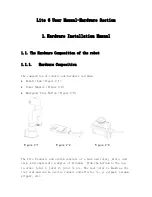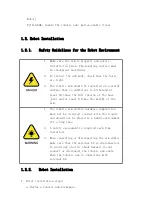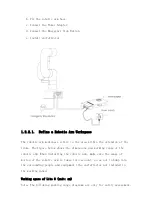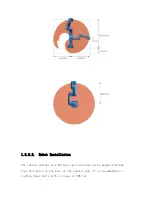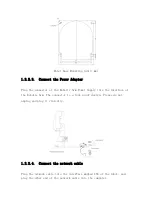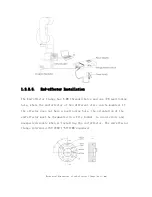
axis)
Tool Coordinate System
(Please refer to the
figure 1)
Consists of tool center point and coordinate orientation. If the
TCP offset is not set, the default tool coordinate system is
located at flange center.
For tool coordinate System based motion: The tool center point
is taken as the zero point, and the trajectory of the robotic
arm refers to the tool coordinate system.
User Coordinate System
(Please refer to the
figure 1)
The user coordinate system can be defined as any other reference
coordinate system rather than the robot base.
Manual Mode
In this mode, the robotic arm will enter the ‘zero gravity’
mode, since the gravity is compensated, the user can guide the
robotic arm position directly by hand.
Teach Sensitivity
Teach sensitivity range is from 1 to 5 level. The larger the set
value, the higher the teach sensitivity level, and the less the
force required to drag the joint in the manual mode.
Collision Sensitivity
The collision sensitivity range is from 0 to 5 level. When it is
set to 0, it means that collision detection is not enabled. The
larger the set value, the higher the collision sensitivity
level, and the smaller the force required to trigger the
collision protection response of the robotic arm.
GPIO
General-purpose input and output.
For the input, you can check the potential of the pin by reading
a register;
For the output, you can write a certain register to make this
pin output high or low potential;
Safety Boundary
When this mode is activated, the boundary range of the cartesian
space of the robotic arm can be limited. If the tool center
point (TCP) exceeds the set safety boundary, the robotic arm
will stop moving.
Reduced Mode
When this mode is activated, the maximum linear velocity of the
Cartesian motion of the robotic arm, the maximum joint speed,
and the range of the joint motion will be limited.
Figure 1

















